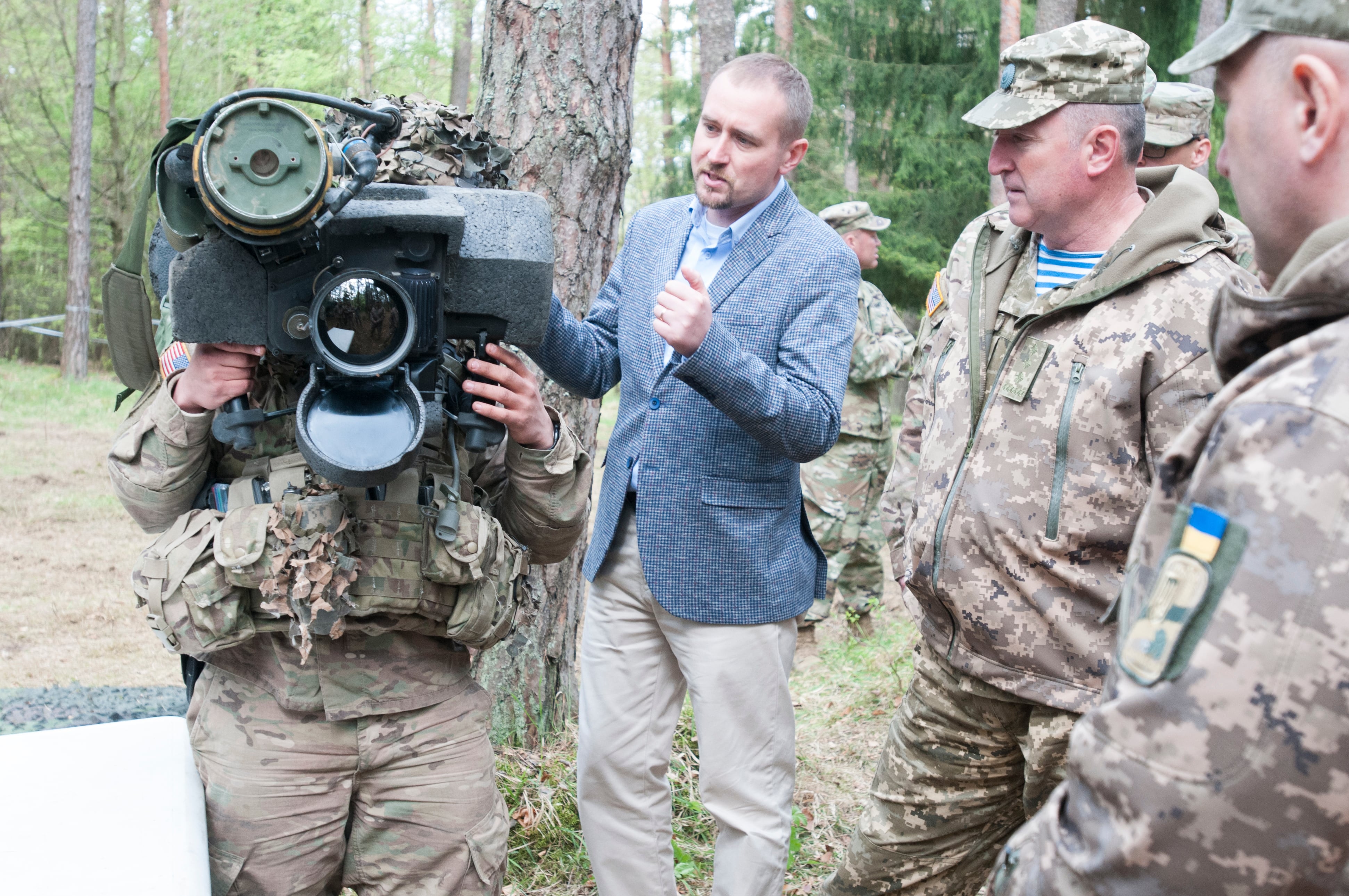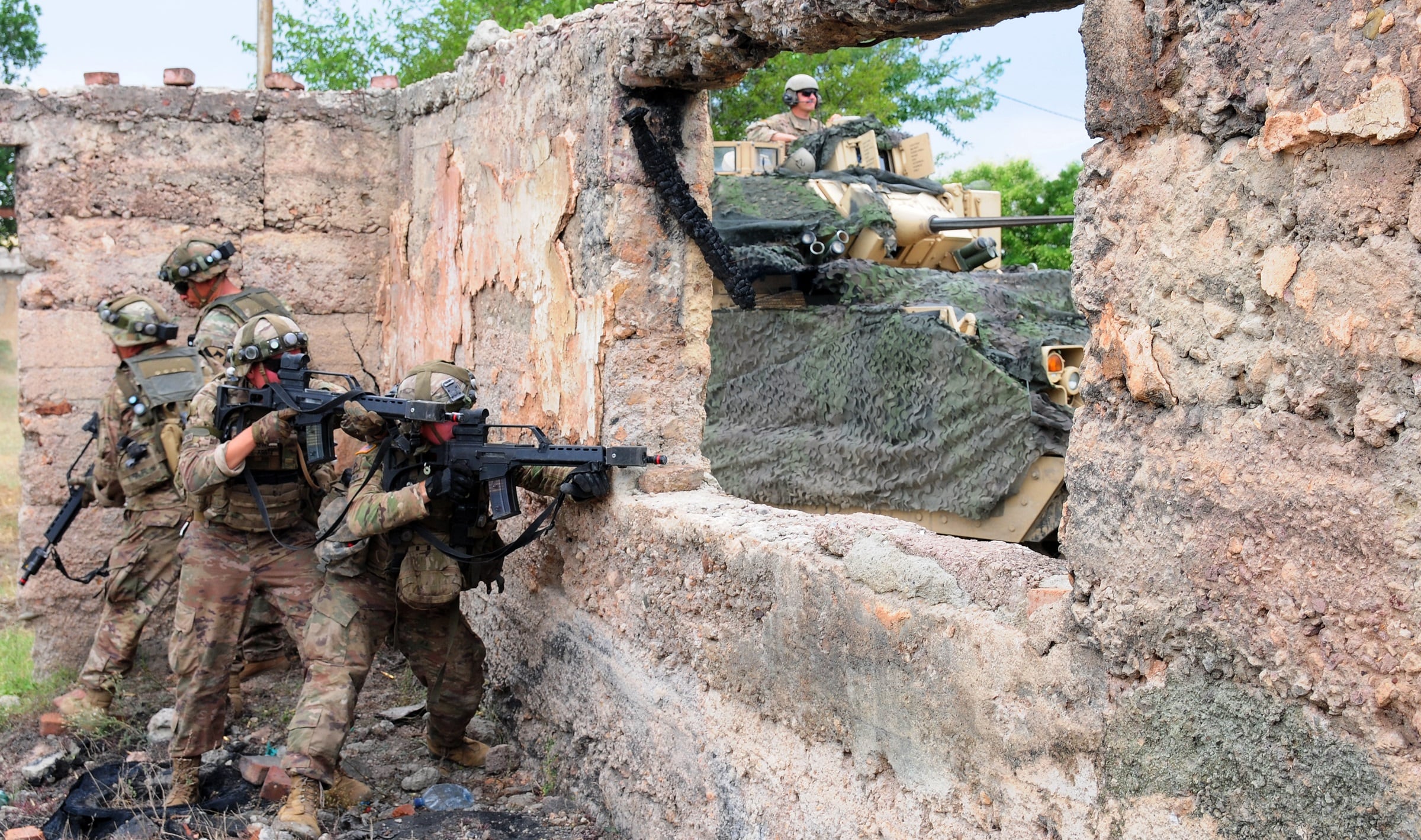The U.S. has been providing lethal aid in the form of Javelin anti-tank missiles to Ukraine since May, and Russian armor is reportedly deterred by the investment.
On top of the lethal aid, the U.S. has trainers currently in the country, including National Guardsmen running the Yavoriv Combat Training Center and American special operations forces running selection courses for their Ukrainian counterparts.
The successes have lawmakers and military leaders looking for other ways to help.
“The fact that they have a Javelin that they could employ and they know how to employ it as a deterrent,” Gen. Curtis Scaparrotti, head of U.S. European Command and the NATO Supreme Allied Commander-Europe, told the Senate Armed Services Committee Tuesday.
“The Ukrainians, in my view, have trained very well for the use of that, they’ve been responsible in the security and the deployment of it and we watch that closely.”
The FGM-148 Javelins were characterized as “defensive lethal aid" when sold to Ukraine, with the stipulation that they are meant to be used in the event of a resurgence in the Ukrainian conflict, not for offensive purposes.
At the Senate hearing Tuesday, Scaparrotti confirmed Javelins have not been employed on the front lines in Ukraine’s eastern Donbass region, but added that the Russians were aware of the systems when senators asked if the Javelins make Russian T-72 tank crews “a little more nervous."
“I think it does," Scaparrotti said. “[The Russians] take that into consideration in the employment of their forces and where they put them.”
U.S. special operations forces have also been deeply involved in training their Ukrainian counterparts.
Iowa Sen. Joni Ernst said during the hearing that she recently traveled to the country to spend time with Ukraine’s “brand-new special operations forces that just graduated from their Ukrainian Q Course, which is run by our American special operations forces.”
Ernst visited a training center in Berdychiv, Ukraine, where U.S. and Ukrainian SOF work closely to improve recruitment, retention, training, and overall military tactics, according to a statement from her offices regarding the February trip.
The EUCOM commander said that Ukraine has been asking for help in other areas, as well, including support for counter-battery systems to defeat enemy indirect fire, sniper systems, grenade launchers, ammo and even help developing a secure communications network.
“They’ve asked us for help in communication at an operational level," Scaparrotti said. "And they do have a distinct need for that because while we focus on the line of contact, their chief of defense is also focused on other areas of the country that are a threat.”

The Organization for Security and Cooperation in Europe continuously notes ceasefire violations in Ukraine’s eastern Donetsk and Luhansk regions, some of which result in casualties.
The conflict is currently set at a standstill, but when major battles were occurring, Western and Ukrainian officials complained that Russian T-72BM tanks, which were not known to have been exported, were used to significantly back separatists. Systems like the Javelin may deter further aggression.
Another major area of focus should be on the Ukrainian Navy, such as helping them to defend the Kerch Strait, Scaparrotti said. That waterway was the location of a Nov. 25 incident in which Ukrainian naval vessels were fired upon and seized by Russian forces.
The Ukrainian Navy “was not large to begin with, given the portion of the fleet that Russia took when it annexed Crimea,” Scaparrotti said. “And they just lost a couple of ships, as well, in the Kerch Strait. So I think there are some areas there that we can help them get this Navy back up and begin to supply it.”
All of these recommendations will be put forward in the authorization bill coming up, Scaparrotti said.
Retired Lt. Gen. Ben Hodges, who helmed U.S. European Command’s Army component during the turbulent 2014-2017 time period, largely agreed with Scaparrotti’s recommendations.
“But I also think that there needs to be some real work done by the [Ukrainian government] to ensure transparency of their own defense budget, a review of their arms industry,” Hodges told Military Times. “They’re quite capable of producing sniper rifles and other weapon systems.”
RELATED

Hodges said that ensuring the Ukrainian government holds people accountable for major mishaps, such as the explosion of a large ammunition dump roughly 110 miles east of Kyiv in October, is paramount when providing military assistance and troop training.
The explosion was the result of negligently storing ammunition in an open-air setting, which may have created an opportunity for separatist sabotage, the secretary of the Ukrainian parliament’s national security committee told the Kyiv Post in November. Whether or not sabotage was the definite cause of the blast, Ukrainian forces need to build secure ammunition storage sites, the politician added.
Scaparrotti’s desire to build up Ukraine’s naval fleet is also one Hodges takes very seriously.
“[The Ukrainian] Navy is in real need of assistance in terms of infrastructure and modernization,” he said. “They will be critical to any NATO-led efforts to counter [Russian] aggression and further expansion in the Black Sea region.”
Hodges has been vocal about his concern that the Russian military intends to “choke out” Ukraine’s seaports through capturing Black Sea coastal areas.
“The next phase will probably be land and sea operations that would eventually secure maybe even Mariupol but continue to take the Ukrainian coastline and connect Crimea back up to Russia along the Sea of Azov," he told Military Times in December. “It’s not going to happen in the next six months, but this is the direction they’re taking.”
Kyle Rempfer was an editor and reporter who has covered combat operations, criminal cases, foreign military assistance and training accidents. Before entering journalism, Kyle served in U.S. Air Force Special Tactics and deployed in 2014 to Paktika Province, Afghanistan, and Baghdad, Iraq.




